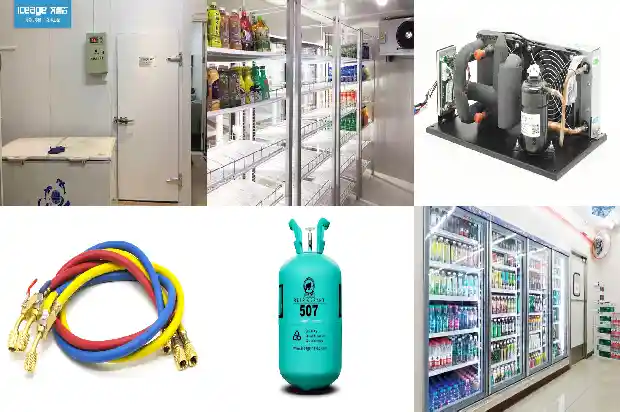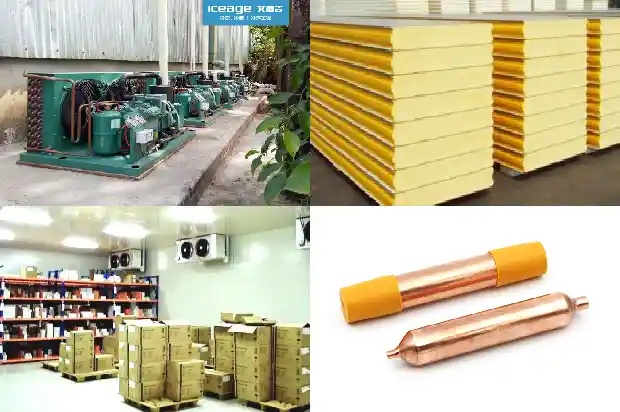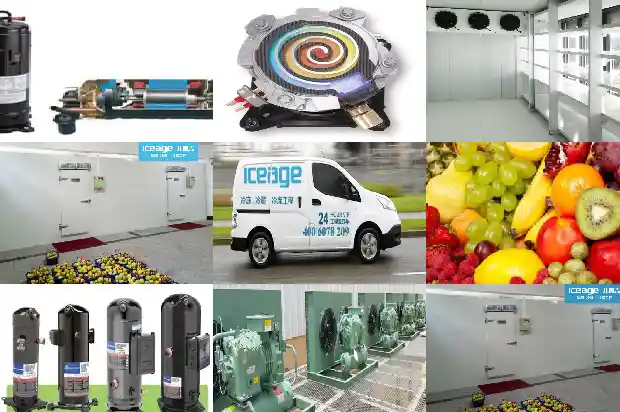Common Faults and Treatment Methods of Single-phase Asynchronous Motors
2025-03-12
Single-phase asynchronous motors refer to a type of motors with relatively small capacity that are powered by a single-phase power supply. They are widely used in small electrical equipment such as household appliances, power tools, and medical devices.
In terms of appearance and internal structure, there is not much difference between single-phase asynchronous motors and three-phase cage asynchronous motors. Both belong to electrical equipment that operates in a single-side excitation mode. Since three-phase motors use symmetrical three-phase alternating current, a rotating magnetic field is formed, which in turn generates a rotating torque to make the rotor drive the load to rotate. However, the power source used by single-phase asynchronous motors is single-phase electricity. The magnetomotive force established by single-phase electricity is a pulsating magnetomotive force, which cannot make the motor rotate in a fixed direction or start by itself. Therefore, two sets of windings are installed on the stator of a single-phase motor: in addition to the main winding that generates the main magnetic field, a starting winding is also installed. According to the different installation methods of the starting winding, there are the following two types of single-phase motors:
Split-phase type —— The main winding and the starting winding are installed on the stator core. The main winding is directly connected to the single-phase power supply (with the same function as the main winding of a three-phase motor), and the starting winding is connected in series with the starting switch and components such as capacitors and resistors for phase splitting, and then connected to the same single-phase power supply. When the motor starts, both windings are energized at the same time. When the speed approaches 70%-80% of the synchronous speed, the starting winding has completed its mission. The power supply can be cut off, or it can continue to assist the main winding in working. The wire diameters and the number of turns of the two windings are different, and they have a phase difference of 90 degrees in space. Generally, the main winding accounts for 2/3 of the number of stator slots, and the starting winding accounts for 1/3.
Shaded-pole type The stator is mostly salient-pole type, and a concentrated winding, that is, the main winding, is installed on the pole. A small slot is opened at 1/3-1/4 of the pole shoe of each pole, and a short-circuited copper ring (also known as the shaded-pole coil) is embedded in the small slot to cover part of the magnetic pole.
Although the power factor, efficiency, and overload capacity of single-phase asynchronous motors are lower than those of three-phase asynchronous motors of the same capacity, and their volume is larger than that of three-phase asynchronous motors of the same capacity, they have a simple structure, low cost, reliable operation, and convenient maintenance. At the same time, the power of single-phase asynchronous motors is not large, so the above disadvantages are not very prominent.
The common faults of single-phase asynchronous motors are mainly circuit faults and magnetic circuit faults, and a small part is due to improper use and maintenance. For motors that have been put into use after leaving the factory, the heat loss caused by magnetic circuit loss can be regarded as an invariable loss, and the use and maintenance are also human factors. Therefore, circuit faults are the main faults, specifically manifested as winding faults.
The main reasons for winding faults are winding short circuit, winding grounding, and motor overload.
In terms of appearance and internal structure, there is not much difference between single-phase asynchronous motors and three-phase cage asynchronous motors. Both belong to electrical equipment that operates in a single-side excitation mode. Since three-phase motors use symmetrical three-phase alternating current, a rotating magnetic field is formed, which in turn generates a rotating torque to make the rotor drive the load to rotate. However, the power source used by single-phase asynchronous motors is single-phase electricity. The magnetomotive force established by single-phase electricity is a pulsating magnetomotive force, which cannot make the motor rotate in a fixed direction or start by itself. Therefore, two sets of windings are installed on the stator of a single-phase motor: in addition to the main winding that generates the main magnetic field, a starting winding is also installed. According to the different installation methods of the starting winding, there are the following two types of single-phase motors:
Split-phase type —— The main winding and the starting winding are installed on the stator core. The main winding is directly connected to the single-phase power supply (with the same function as the main winding of a three-phase motor), and the starting winding is connected in series with the starting switch and components such as capacitors and resistors for phase splitting, and then connected to the same single-phase power supply. When the motor starts, both windings are energized at the same time. When the speed approaches 70%-80% of the synchronous speed, the starting winding has completed its mission. The power supply can be cut off, or it can continue to assist the main winding in working. The wire diameters and the number of turns of the two windings are different, and they have a phase difference of 90 degrees in space. Generally, the main winding accounts for 2/3 of the number of stator slots, and the starting winding accounts for 1/3.
Shaded-pole type The stator is mostly salient-pole type, and a concentrated winding, that is, the main winding, is installed on the pole. A small slot is opened at 1/3-1/4 of the pole shoe of each pole, and a short-circuited copper ring (also known as the shaded-pole coil) is embedded in the small slot to cover part of the magnetic pole.
Although the power factor, efficiency, and overload capacity of single-phase asynchronous motors are lower than those of three-phase asynchronous motors of the same capacity, and their volume is larger than that of three-phase asynchronous motors of the same capacity, they have a simple structure, low cost, reliable operation, and convenient maintenance. At the same time, the power of single-phase asynchronous motors is not large, so the above disadvantages are not very prominent.
The common faults of single-phase asynchronous motors are mainly circuit faults and magnetic circuit faults, and a small part is due to improper use and maintenance. For motors that have been put into use after leaving the factory, the heat loss caused by magnetic circuit loss can be regarded as an invariable loss, and the use and maintenance are also human factors. Therefore, circuit faults are the main faults, specifically manifested as winding faults.
The main reasons for winding faults are winding short circuit, winding grounding, and motor overload.

- Winding short circuit The short circuit of the stator winding can be judged with the help of experience and instruments. The short circuit of the stator winding is generally a partial short circuit, manifested as several turns at the end of the coil being burned, while other parts of the coil are slightly discolored. The DC resistance of the winding can be measured by the resistance method and then compared with the reference value in the instruction manual. It can also be judged by experience such as smelling, touching, and observing.
The short circuit of the winding of a single-phase motor is manifested as a short circuit between the turns of the coil winding. The general reasons for this are the problems in the process quality of winding and wire embedding, such as the damage of the insulation of the magnet wire during winding, or the insulation sleeve not being properly put on after the connection of the coil wires is welded, and the end of the insulated wire being damaged. The power of single-phase motors is relatively small, and the wire diameters of the magnet wires used are all very small, with low mechanical strength, and the insulation layer is extremely easy to be damaged.
For the short circuit between the turns of the coil, local repair can be carried out, and the damaged coil can be replaced. If the damage is serious, the entire coil needs to be replaced (note that all parameters must be the same as those of the original coil). - Winding grounding Winding grounding can be checked with a multimeter, a megohmmeter, etc., and is manifested as obvious burn marks at the slot opening or the bottom of the slot of the motor. The reasons are as follows:
(1) The concentricity of the stator and the rotor is not good, resulting in "scoring" friction.
The stator core is burned due to the heat generated by the friction, which damages the slot insulation, leading to the damage of the coil insulation and grounding.
(2) The quality of wire embedding is poor. The end connection part of the coil at the slot opening of the iron core is squeezed, and the slot insulation is damaged; the insulation at the slot opening of some parts is not well sealed, the slot wedge is in direct contact with the wire, and the insulation of the slot wedge decreases after being damp, etc., resulting in winding grounding.
(3) The motor runs at a high temperature for a long time, the slot insulation is charred, aged and brittle, or it is severely damp, and the insulation is broken down, resulting in winding grounding.
(4) In rural areas or factories without lightning arresters, if the grounding of the motor is not properly connected, the motor may suffer a breakdown accident to the ground during thunderstorms.
(5) Metal foreign objects and harmful powders, etc. enter the motor winding and damage the insulation. - Motor overload The stator winding is burned out due to the motor overload, and the winding is discolored. The reasons for the motor overload are as follows:
(1) The type and power of the motor do not match the size of the load, resulting in an excessively long starting time and causing the winding to overheat and burn out.
(2) The improper use mode of the load.
(3) The working conditions of the motor are harsh (such as high ambient temperature and poor ventilation conditions, etc.).
(4) The power supply voltage is unstable.
(5) Mechanical failures (such as bearing damage, friction between the stator and the rotor, etc.).
(6) Quality factors of the motor (caused by manufacturing or repair, such as an excessively large and uneven air gap between the stator and the rotor, poor quality of silicon steel sheets, large burrs on the punched sheets, uneven lamination, etc., or improper repair methods that damage the insulation layer of the punched sheets or the parameters of the replaced winding do not meet the original design requirements, etc.).
(7) Capacitor damage. If the capacitor is short-circuited, open-circuited, or has insufficient capacitance, it will cause the capacitor motor not to generate starting torque, or the starting torque is too small, making it difficult for the motor to start, and the coil overheats and burns out.
The motor after repair must be comprehensively inspected before it can be put into use again to avoid repeated inspections and repairs. Generally, it is inspected from the following aspects: ① Check the assembly quality of the motor: whether the wiring at the outlet end is correct; the assembly fastening situation (whether the bolts and nuts for fastening are tightened, whether the rotor rotates flexibly, whether the radial runout of the shaft extension is within the limit value, and whether the bearing is in good condition); ② Check the size and symmetry of the air gap: determined according to the difference between the inner diameter of the stator and the outer diameter of the rotor, and measured with a feeler gauge. ③ Check the vibration condition of the motor: the bearing should be stable, light, and the sound should be uniform without harmful noise, and use a dial indicator to measure whether the vibration value of the motor is within the allowable range. ④ Measure the insulation resistance and the DC resistance of the winding in the cold state. ⑤ Conduct no-load and short-circuit tests.
Of course, in actual use, compound faults often occur. This requires comprehensive judgment of which is the original fault to finally solve the problem.
Related Articles
- Common Faults and Daily Maintenance of Commercial Ice Makers
- Analysis of Common Faults of Chillers
- Wiring Methods, Faults and Classifications of Fan Coil Units, All Here~~
- Eliminate the "Blockage" Faults (Ice Blockage, Dirt Blockage, Oil Blockage) of the Refrigeration System in 5 Minutes
- How to Inspect and Troubleshoot the Faults of the Control Valve in the Cold Storage?
- Common Faults in Refrigeration Systems and Handling Methods
- What Are the Common Causes of High - pressure Faults in Chillers?
- Basic Faults and Preventive Maintenance of Water - cooled Units
- Composition and Common Faults of Screw Refrigeration Compressors
- Common Faults and Solutions of Central Air - conditioning Chiller Units
- Common Faults of Industrial Chillers
- Common Faults and Corresponding Solutions of Chillers During Use
- Analysis and Troubleshooting of Common Faults in Air - source Heat Pumps
- Maintenance Methods for Faults in Screw Refrigeration Air - conditioner Compressors
- Common Faults and Troubleshooting Methods of the Moving Mechanism of Piston Compressors
- Analysis of Common Faults in Compressor Overcurrent and Burnout
- What are the reasons for the inactivity of the automotive air conditioning compressor? What are the common faults?
- Common Faults of HVAC Fan Coil Units
